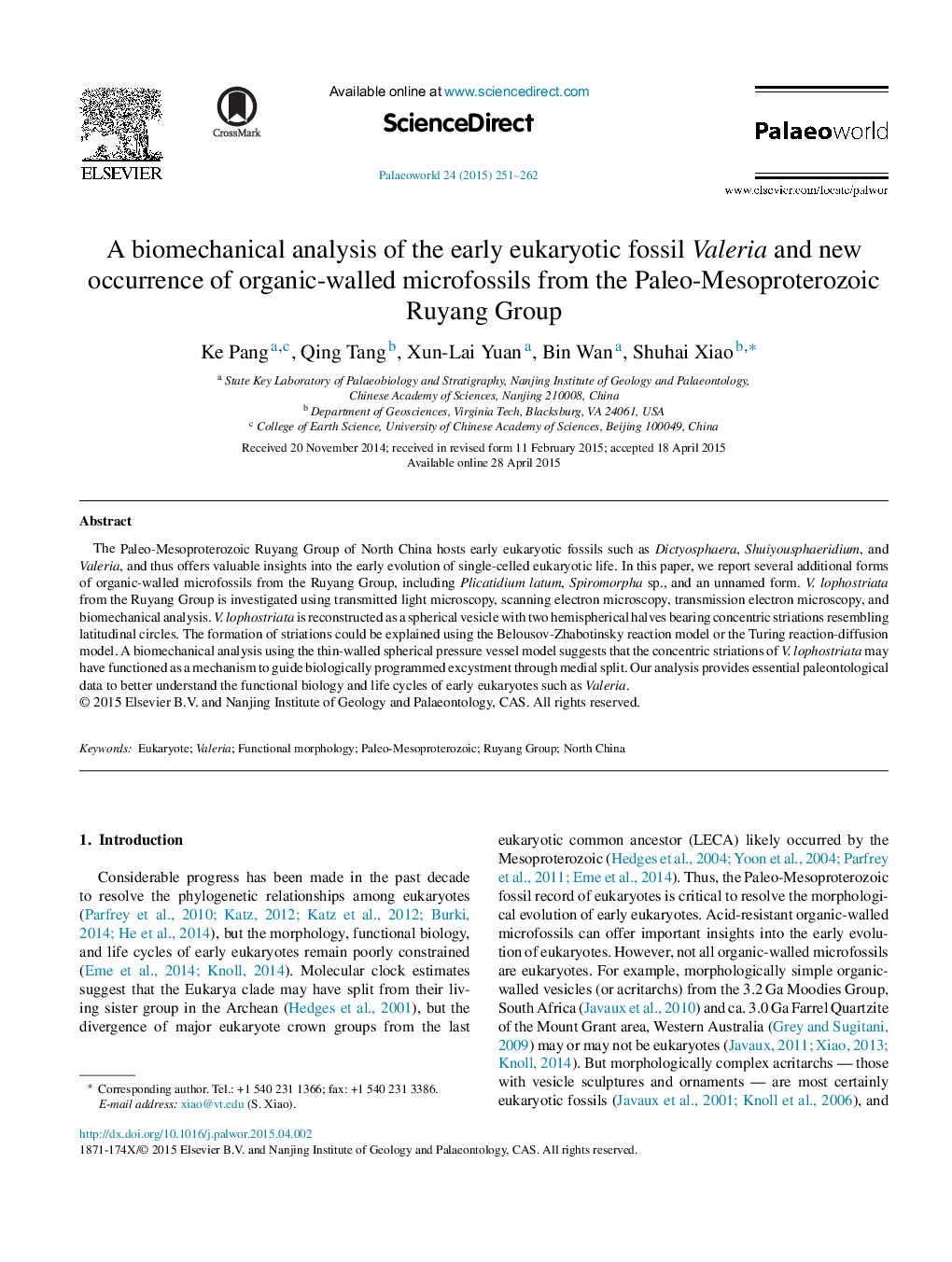| Article ID | Journal | Published Year | Pages | File Type |
|---|---|---|---|---|
| 4749604 | Palaeoworld | 2015 | 12 Pages |
The Paleo-Mesoproterozoic Ruyang Group of North China hosts early eukaryotic fossils such as Dictyosphaera, Shuiyousphaeridium, and Valeria, and thus offers valuable insights into the early evolution of single-celled eukaryotic life. In this paper, we report several additional forms of organic-walled microfossils from the Ruyang Group, including Plicatidium latum, Spiromorpha sp., and an unnamed form. V. lophostriata from the Ruyang Group is investigated using transmitted light microscopy, scanning electron microscopy, transmission electron microscopy, and biomechanical analysis. V. lophostriata is reconstructed as a spherical vesicle with two hemispherical halves bearing concentric striations resembling latitudinal circles. The formation of striations could be explained using the Belousov-Zhabotinsky reaction model or the Turing reaction-diffusion model. A biomechanical analysis using the thin-walled spherical pressure vessel model suggests that the concentric striations of V. lophostriata may have functioned as a mechanism to guide biologically programmed excystment through medial split. Our analysis provides essential paleontological data to better understand the functional biology and life cycles of early eukaryotes such as Valeria.
